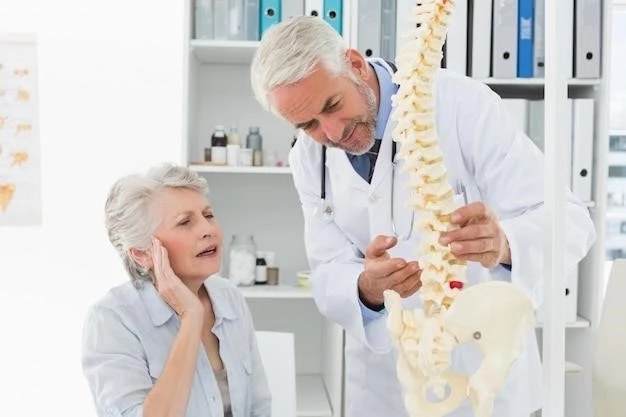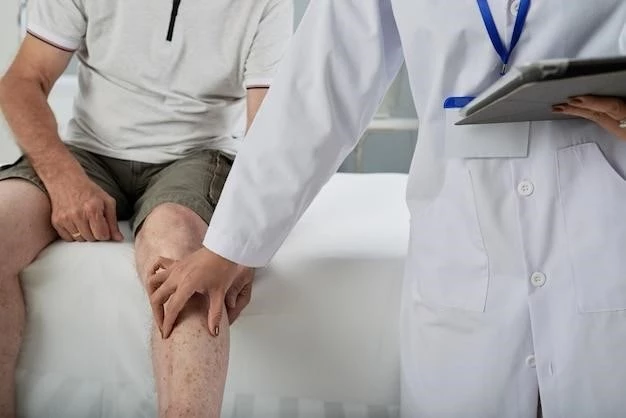Introduction to Arthrogryposis
Arthrogryposis is a rare condition characterized by multiple joint contractures present at birth, impacting mobility and flexibility. These contractures can affect the arms, legs, hands, and feet, leading to limited movement and muscle development.
Individuals with arthrogryposis may experience challenges in performing daily activities and require specialized care to manage the condition effectively. The causes of arthrogryposis are varied, ranging from genetic factors to environmental influences.
Understanding the underlying causes and available treatment options is essential in providing comprehensive care for individuals with arthrogryposis. Through a multidisciplinary approach involving medical interventions, physical therapy, and surgical procedures, it is possible to improve mobility and quality of life for those affected by this condition.
Exploring the genetic factors contributing to arthrogryposis helps in understanding the inheritance patterns and advancing genetic counseling for affected families. Additionally, raising awareness and advocating for individuals with arthrogryposis can promote inclusivity and support within communities.
Ongoing research in arthrogryposis aims to enhance diagnostic methods, develop innovative treatments, and improve long-term outcomes for affected individuals. By staying informed about the latest research advances, healthcare professionals and caregivers can offer the most up-to-date care and support to those living with arthrogryposis.
Causes of Arthrogryposis
Arthrogryposis is a complex condition with various contributing factors. The primary causes include genetic mutations affecting muscle development and joint formation during fetal development. These genetic abnormalities can disrupt normal muscle growth and lead to joint contractures.
Other causes of arthrogryposis may result from environmental factors, such as infections or maternal health conditions during pregnancy. In some cases, limited movement in the womb can also contribute to joint contractures and muscle weakness in newborns.
Furthermore, neurological conditions that impact the brain’s control over muscle movements can play a role in the development of arthrogryposis. Conditions like spinal muscular atrophy or cerebral palsy may present with arthrogryposis-like symptoms.
It is essential to conduct thorough evaluations and genetic testing to identify the specific causes of arthrogryposis in each individual case. Understanding the underlying factors contributing to the condition is crucial in determining the most effective treatment approach and management strategies for patients with arthrogryposis.
Treatment Options for Arthrogryposis
Managing arthrogryposis requires a comprehensive approach that addresses the unique needs of each individual. Treatment options aim to improve mobility, enhance independence, and optimize quality of life for patients with arthrogryposis.
Physical therapy plays a central role in the treatment of arthrogryposis. Therapists work with patients to develop personalized exercise programs that focus on stretching, strengthening, and improving range of motion in affected joints. These interventions help prevent contractures, maintain muscle tone, and promote functional abilities.
In more severe cases, surgical interventions may be recommended to release joint contractures, improve joint alignment, or correct skeletal deformities. Surgical procedures are tailored to the specific needs of the patient and may involve tendon transfers, osteotomies, or external fixators to enhance mobility and function.
Orthotic devices, such as braces or splints, can also support joint alignment and facilitate better movement patterns. Assistive devices like wheelchairs or walkers may be prescribed to aid in mobility and independence for individuals with arthrogryposis.
Additionally, ongoing monitoring by a multidisciplinary team of healthcare professionals, including orthopedic surgeons, physical therapists, occupational therapists, and genetic counselors, is essential in managing arthrogryposis effectively. Collaborative care ensures that treatment plans are optimized and adjusted based on the individual’s progress and needs.
Arthrogryposis and Physical Therapy
Physical therapy plays a crucial role in the management of arthrogryposis, focusing on improving muscle strength, joint flexibility, and overall mobility. Therapists design individualized treatment plans to address the specific needs and challenges of patients with arthrogryposis.
Physical therapy interventions for arthrogryposis often include passive stretching exercises to enhance joint range of motion and prevent contractures. Active muscle strengthening exercises help improve muscle tone and support functional movements.
Another key aspect of physical therapy for arthrogryposis is proprioceptive training, which focuses on enhancing body awareness and coordination. This type of training can aid individuals in better controlling their movements and improving balance.
Furthermore, adaptive equipment and assistive devices may be introduced during physical therapy sessions to facilitate daily activities and promote independence. Therapists work closely with patients and their families to ensure that they can effectively implement therapeutic strategies at home.
Regular physical therapy sessions, combined with consistent home exercises and activities, are essential for maximizing the benefits of treatment and promoting long-term functional outcomes for individuals with arthrogryposis. By engaging in a multidisciplinary approach that includes physical therapy, patients can enhance their overall quality of life and achieve greater levels of independence.
Surgical Interventions for Arthrogryposis
Surgical interventions play a significant role in the management of arthrogryposis, aiming to address joint contractures, skeletal deformities, and limitations in mobility. The decision to pursue surgery is based on the individual’s unique needs and the severity of their condition.
Common surgical procedures for arthrogryposis include tendon transfers, which involve moving tendons to improve muscle function and joint mobility. Tendon lengthening procedures may also be performed to release tight muscles and reduce contractures.
In cases where joint alignment is affected, osteotomies – surgical cuts in the bone – may be necessary to correct deformities and improve overall joint function. External fixators can be utilized to gradually straighten and realign bones, particularly in cases of severe skeletal abnormalities.
Surgical interventions for arthrogryposis are carefully planned and executed by a specialized team of orthopedic surgeons and healthcare professionals. Post-operative rehabilitation, including physical therapy and ongoing monitoring, is essential to optimize the surgical outcomes and support long-term mobility gains.
Collaboration between surgeons, physical therapists, and other members of the healthcare team ensures a comprehensive and integrated approach to surgical interventions for arthrogryposis, ultimately aiming to enhance the quality of life and functional abilities of individuals affected by this condition.
Living with Arthrogryposis⁚ Challenges and Coping Strategies
Living with arthrogryposis presents unique challenges that can impact daily activities, mobility, and emotional well-being. Individuals with arthrogryposis may face physical limitations due to joint contractures and muscle weakness, requiring adaptive strategies to overcome obstacles.
One of the main challenges is maintaining independence in tasks such as dressing, eating, or personal hygiene. Developing adaptive techniques, using assistive devices, and modifying the environment can help individuals with arthrogryposis navigate daily routines more effectively.
Social challenges, including stigma, accessibility issues, and limited participation in certain activities, may also arise for individuals with arthrogryposis. Building a strong support network, accessing inclusive community resources, and advocating for accessibility can aid in overcoming social barriers.
Emotional well-being is crucial for individuals living with arthrogryposis. Coping strategies such as mindfulness, support groups, and counseling can help manage stress, anxiety, and feelings of isolation. Fostering resilience and self-acceptance is essential in navigating the emotional impact of the condition.
Education and raising awareness about arthrogryposis can promote understanding, acceptance, and inclusivity within society. By advocating for accessibility, equality, and opportunities for individuals with arthrogryposis, we can create a more supportive and inclusive environment for those living with this condition.
Genetic Factors in Arthrogryposis
Genetic factors play a significant role in the development of arthrogryposis, influencing muscle development, joint formation, and overall mobility. Various genetic mutations and inheritance patterns have been associated with different types of arthrogryposis, highlighting the complex genetic nature of the condition.
Arthrogryposis can be classified into different subtypes based on the underlying genetic abnormalities, such as mutations in genes related to muscle structure and function. These genetic variations can affect the signaling pathways that regulate muscle growth and joint movement, leading to joint contractures and muscle weakness.
Understanding the genetic basis of arthrogryposis is essential for accurate diagnosis, genetic counseling, and personalized treatment approaches. Genetic testing and counseling can help families assess the risk of passing the condition to future generations and make informed decisions regarding family planning.
Ongoing research into the genetic factors contributing to arthrogryposis seeks to identify new gene mutations, understand their specific effects on muscle and joint development, and potentially discover targeted therapies for certain genetic subtypes of the condition. By unraveling the genetic complexities of arthrogryposis, researchers aim to improve diagnostic accuracy, enhance treatment strategies, and ultimately improve outcomes for individuals affected by this condition.
Arthrogryposis Awareness and Advocacy
Enhancing awareness and advocating for individuals with arthrogryposis are crucial steps in promoting acceptance, inclusion, and support within communities. By raising awareness about the challenges and needs of those living with arthrogryposis, we can foster understanding and respect for diversity.
Advocacy efforts for arthrogryposis aim to promote accessibility, equality, and opportunities for individuals with the condition. Advocates work to ensure that individuals with arthrogryposis have access to necessary resources, healthcare services, and educational accommodations to help them thrive.
Community involvement, empowerment programs, and educational campaigns play a vital role in increasing awareness about arthrogryposis and combating misconceptions or stereotypes associated with the condition. By sharing personal stories, organizing events, and engaging with policymakers, advocates can drive positive change and create a more inclusive society.
Support groups and online communities provide valuable platforms for individuals with arthrogryposis, their families, and caregivers to connect, share experiences, and access information and resources. These networks offer emotional support, guidance, and a sense of belonging to those affected by arthrogryposis.

Continued advocacy efforts and awareness initiatives contribute to building a more inclusive and supportive environment for individuals with arthrogryposis, empowering them to lead fulfilling lives and pursue their goals and aspirations without discrimination or barriers.
Research Advances in Arthrogryposis
Ongoing research in the field of arthrogryposis is driving significant advances in diagnosis, treatment, and understanding of the underlying mechanisms of the condition. Researchers are exploring innovative approaches to improve outcomes and quality of life for individuals affected by arthrogryposis.
Advances in diagnostic tools, such as genetic testing and imaging techniques, enable healthcare professionals to identify specific genetic mutations and structural abnormalities associated with arthrogryposis. This precision in diagnosis allows for personalized treatment plans tailored to each individual’s unique needs.
Research efforts are focusing on developing targeted therapies that address the genetic factors contributing to arthrogryposis. By investigating gene therapies, muscle regeneration techniques, and novel treatment modalities, researchers aim to intervene at the molecular level to optimize muscle and joint function.
Clinical trials and studies are exploring the efficacy of new surgical approaches, rehabilitation strategies, and assistive technologies in enhancing the mobility and independence of individuals with arthrogryposis. These research endeavors aim to expand treatment options and improve long-term outcomes for patients.
Furthermore, collaborative research initiatives involving multidisciplinary teams of geneticists, orthopedic surgeons, physical therapists, and other specialists are advancing our understanding of the complex interplay between genetic, muscular, and skeletal factors in arthrogryposis. By sharing knowledge and expertise, researchers are paving the way for more effective interventions and improved care for individuals living with this condition.
